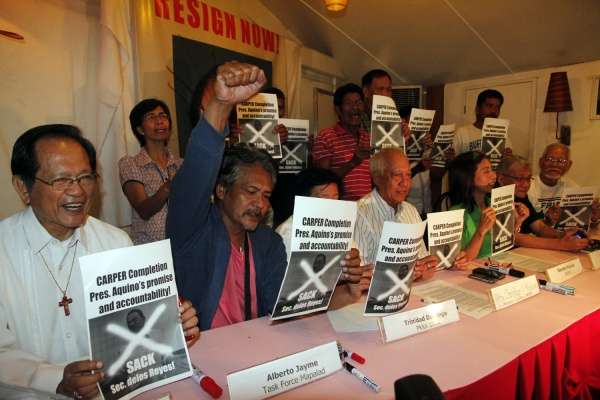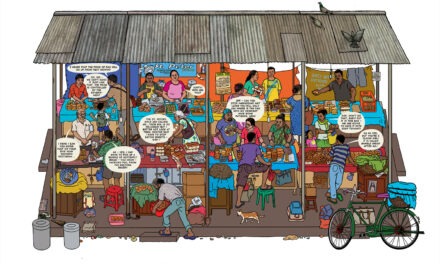31 August 2010
The Civil Liability for Nuclear Damage Bill 2010 has been passed by both Houses of the Parliament and now only awaits assent by the President of India. This will operationalise the India-USA civilian nuclear agreement and will open the floodgates for nuclear reactor companies to establish new facilities in India.
The debates in Parliament, in the media and within policy circles have been largely limited to the question of liability of suppliers and operators in case of nuclear accidents. These concerns, while valid, camouflage an urgently needed larger political debate on the adoption of nuclear fission as a large-scale source of energy for India. Risks at many stages in the process raise concerns about the feasibility of nuclear energy, imminent dangers from the construction of nuclear plants, the social and environmental impacts of uranium mining as well as issues of land acquisition and displacement.
WILL REGULATION SUFFICE?
• Nuclear power plants pose unlimited risk of accidents, with the potential to dwarf the worst industrial disaster to date: the 1984 Union Carbide Bhopal gas leak. There is no known solution to the problems of nuclear waste. Nuclear energy waste products such as plutonium 239 and leftover uranium 238 are highly radioactive and can remain toxic for tens of thousands to many millions of years. Latest advancements in technology are unable to neutralise these radioactive pollutants. India is already grappling with the issue of safe storage of radioactive waste from its existing 17 nuclear reactors. All the sites identified for the 60-odd new reactors in the pipeline are of high-density populations – unlike the sparsely populated Chernobyl in the former USSR, the site of the worst nuclear power plant accident in history – and hence the threat to human lives and society is immensely larger.
• Radioactive pollutants are released not just in the case of an accident but even during routine operation of nuclear (fission) power plants. Significant amounts of radioactive gases such as radon, radioactive noble gases and tritium are routinely ‘vented’ or released into the atmosphere, posing grave radiation risks to nearby populations.
• The mining of uranium necessitates digging out rock, soil and debris that is hundreds of times the actual amount of uranium ore and tens of thousands of times the actual amount of uranium fuel, and that are also tainted with radioactive materials, which will continue to contaminate large areas around the mines for many millions of years. The documented adverse impacts on the health of children (including abnormally high number of birth defects in newborns) and adults around uranium mining areas are another major threat if nuclear power capacity increases. To cite only one example, health surveys done by medical experts near the Jadugoda uranium mining area show that mine workers and their families manifest significant increases in cancers and reproductive illnesses.
• Nuclear establishments are already covered by many layers of secrecy/ information barriers and it is also likely that the Indian
government will put in place a regulatory framework that undermines transparency and democratic decision making ¬– one that covers nuclear establishments under various ‘safety’ and ‘security’ clauses, and prevents any form of information or democratic action, including actions by workers to protect their rights. This will become more opaque with the entry of foreign and domestic private operators.
• Despite having 17 nuclear reactors, India does not have a Nuclear Safety Commission that is independently constituted with powers to enforce information disclosure, frame safety rules, risk-assessment methodologies and protocols, issue periodic risk-assessment reports and conduct safety audits and put it all in the public domain. We demand the setting up of a Nuclear Safety Commission that should have powers to give safety directives, including shutdown of plants. It should include, besides credible independent experts, elected representatives of workers, scientists and professionals working in the industry and all other stakeholders of affected communities. It is not prudent for the government to issue licenses for new nuclear plants until such processes are put in place.
NOT A SOLUTION TO THE CLIMATE CRISIS
• The view pushed by lobby groups and some in the scientific community that nuclear energy is a clean fuel and offers India a viable solution to the climate crisis is false and mere propaganda. Nuclear (fission) energy is carbon intensive, as the entire chain starting from mining the available poor quality ores to fuel rod fabrication to the enormous embedded energies of the power plant construction involves a massive amount of carbon emissions under the present energy supply scenario.
• The Government of India (GoI) has a stated commitment to promoting renewable energy and climate change mitigation. The GoI should redirect the overt and covert subsidies to the nuclear industry (estimated at over Rs. 5,000 crores each year) to community-centered and decentralised renewable energy, thus neutralising the false argument that renewable energy is much more expensive. If all subsidies and environmental costs are calculated, nuclear energy is far costlier than many other forms of energy such as solar which is climate friendly, abundantly available and poses little environmental and health risk.
We see the push for nuclear energy as yet another example of a development trajectory by which costs are transferred to the environment and local people, without their knowledge and full participation in the process of deciding development parameters: Yet another example of privatising profits and socialising the risks and costs. Given all the issues raised, the very question of expansion of nuclear power merits further and transparent debate.
ENDORSED BY:
Organisations:
1. Bharat Jan Vigyan Jatha (BJVJ)
2. Bindrai Institute for Research Study and Action-Mines Monitoring Centre (BIRSA-MMC)
3. Bombay Urban Industrial League for Development (BUILD), Mumbai
4. Campaign for Judicial Accountability and Reforms, New Delhi
5. Center For Contemporary Studies & Research ( CCSR), Lucknow
6. CIEDS Collective, Bengaluru.
7. Delhi Platform
8. Dialogue on Indigenous Culture and Environment ( DICE) Foundation, Nagaland
9. Equitable Tourism Options (EQUATIONS), Bengaluru.
10. Human Rights Law Centre, Sonbadra, Uttar Pradesh
11. India Institute for Critical Action – Centre in Movement (CACIM)
12. Intercultural Resources (ICR)
13. Jharkhand Mines Area Coordination Committee ( JMACC)
14. Jharkhandi Organisation for Struggling Humans (JOSH I-NIC), Jharkhand
15. Jharkhandi Organisation Against Radiation-Jadugoda (JOAR)
16. Kriti, New Delhi
17. Kerala Independent Fish workers Federation ( KSMTF )
18. Focus on the Global South, New Delhi
19. Kabani –the other direction, Kerala
20. Kaimur Kshetra Majdoor Mahila Kisan Sangarsh Samiti, Uttar Pradesh
21. National Forum of Forest People and Forest Workers ( NFFPFW)
22. New Trade Union Initiative (NTUI)
23. Northeast Peoples Alliance on Trade Finance and Development
24. Moving Republic, Bengaluru.
25. OMON Mahila Sangathan, Jharkhand
26. PEACE MUMBAI Network, Mumbai
27. People’s Movement Against Nuclear Energy
28. Saheli, New Delhi
29. Samvedan Cultural Programme
30. South Asian Community Center for Education and Research ( SACCER)
Individuals:
31. Hartman de Souza, Pune and Goa.
32. Joe Athialy, New Delhi
33. K. Babu Rao, Human Rights Forum, Hyderabad
34. Kavitha Kuruganti and Umendra Dutt of Kheti Virasat Mission, Punjab
35. Major General S.G.Vombatkere (Retd), Mysore
36. Manasi Pingle, Film maker, Mumbai.
37. Meher Engineer, Scientist and Former Director of the Bose Institute, Kolkata
38. N S Chakravarthy, Mysore
39. Praful Bidwai, Journalist, New Delhi
40. Prashant Bhushan, Advocate, New Delhi
41. Saraswati Kavula, Movement Against Uranium Projects (MAUP), Andhra Pradesh
42. Shriprakash, Jharkhand
43. Sukla Sen, Mumbai
44. T. Vijayendra, Karnataka
45. Uma Mahajan, Himachal Pradesh
46. Xavier Dias, Editor, Khan Kaneej aur ADHIKAR, Jharkhand








